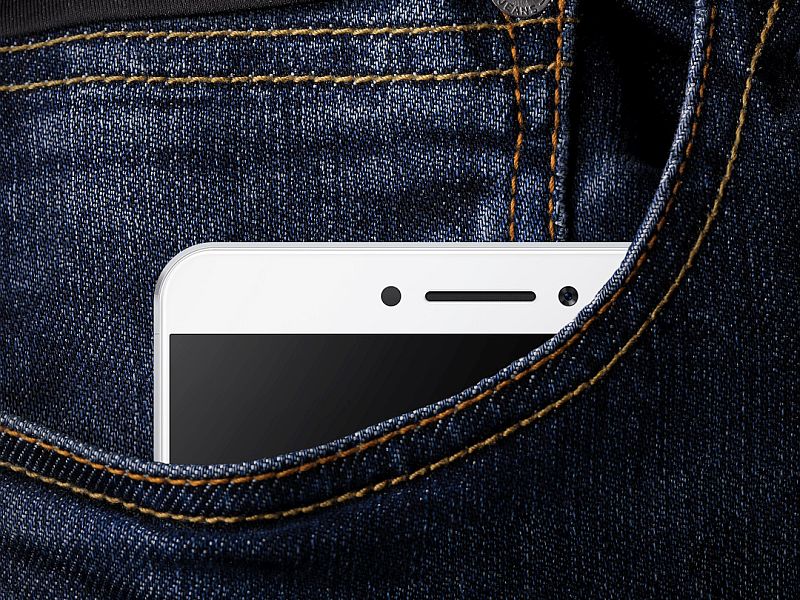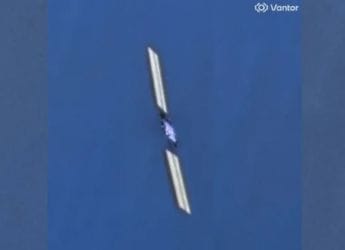- Home
- Mobiles
- Mobiles News
- Xiaomi Mi Max Phablet Launch Date Revealed
Xiaomi Mi Max Phablet Launch Date Revealed

In a separate Weibo post, Xiaomi gave the world first glimpse of the upcoming Mi Max smartphone. The top front panel of the handset was partially revealed in the shared image.
A recently leaked image claimed to be of the unannounced Xiaomi Max showed the phablet to sport a similar design language as the company's flagship, the Mi 5. Much like the flagship, the Max was seen featuring a home button which was expected to integrate the fingerprint scanner. Apart from the front panel, the rear camera setup on the Max phablet also looked identical to the Xiaomi Mi 5.
We first heard about the 'Xiaomi Max' when the Chinese company ran a poll in its home country, asking users what should be the name of its next smartphone. Out of the four options available to users, 'Xiaomi Max' received the most votes.
Ahead of the May 10 launch event, Xiaomi's Mi Max has been spotted in a GFXBench listing purportedly revealing the handset's details. According to the GFXBench listing, the Mi Max will feature a massive 6.4-inch full-HD display; run Android 6.0.1 Marshmallow; powered by hexa-core Snapdragon 650 processor; 2GB of RAM; 16GB of storage; 16-megapixel rear, and 5-megapixel front-facing camera.
Additionally, Xiaomi's CEO Lei Jun has been spotted (via My Drivers) wearing a smart band, believed to be the Mi Band 2. In the image, Jun is seen wearing a smart band featuring a display. A recent report had claimed that the next-generation Mi Band would reduce wearable's dependence on the connected smartphone and would sport a small display. The report had stressed that the display on the new Mi Band would be a highlight feature and will be the biggest improvement over the older generation.
Get your daily dose of tech news, reviews, and insights, in under 80 characters on Gadgets 360 Turbo. Connect with fellow tech lovers on our Forum. Follow us on X, Facebook, WhatsApp, Threads and Google News for instant updates. Catch all the action on our YouTube channel.
Related Stories
- Samsung Galaxy Unpacked 2025
- ChatGPT
- Redmi Note 14 Pro+
- iPhone 16
- Apple Vision Pro
- Oneplus 12
- OnePlus Nord CE 3 Lite 5G
- iPhone 13
- Xiaomi 14 Pro
- Oppo Find N3
- Tecno Spark Go (2023)
- Realme V30
- Best Phones Under 25000
- Samsung Galaxy S24 Series
- Cryptocurrency
- iQoo 12
- Samsung Galaxy S24 Ultra
- Giottus
- Samsung Galaxy Z Flip 5
- Apple 'Scary Fast'
- Housefull 5
- GoPro Hero 12 Black Review
- Invincible Season 2
- JioGlass
- HD Ready TV
- Laptop Under 50000
- Smartwatch Under 10000
- Latest Mobile Phones
- Compare Phones
- Huawei Nova 15
- Huawei Nova 15 Pro
- Huawei Nova 15 Ultra
- OnePlus 15R
- Realme Narzo 90x 5G
- Realme Narzo 90 5G
- Vivo S50 Pro Mini
- Vivo S50
- Asus ProArt P16
- MacBook Pro 14-inch (M5, 2025)
- Huawei MatePad 11.5 (2026)
- OnePlus Pad Go 2 (5G)
- Huawei Watch 10th Anniversary Edition
- OnePlus Watch Lite
- Acerpure Nitro Z Series 100-inch QLED TV
- Samsung 43 Inch LED Ultra HD (4K) Smart TV (UA43UE81AFULXL)
- Asus ROG Ally
- Nintendo Switch Lite
- Haier 1.6 Ton 5 Star Inverter Split AC (HSU19G-MZAID5BN-INV)
- Haier 1.6 Ton 5 Star Inverter Split AC (HSU19G-MZAIM5BN-INV)

















